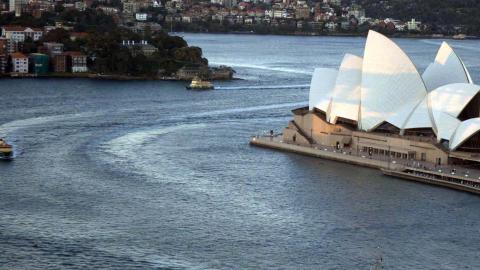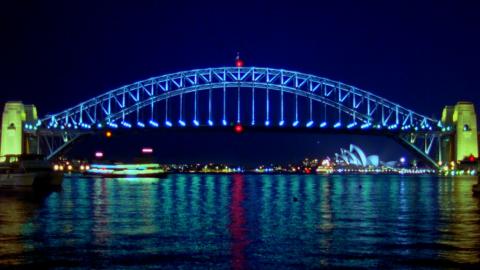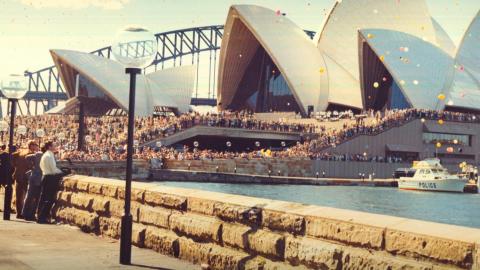
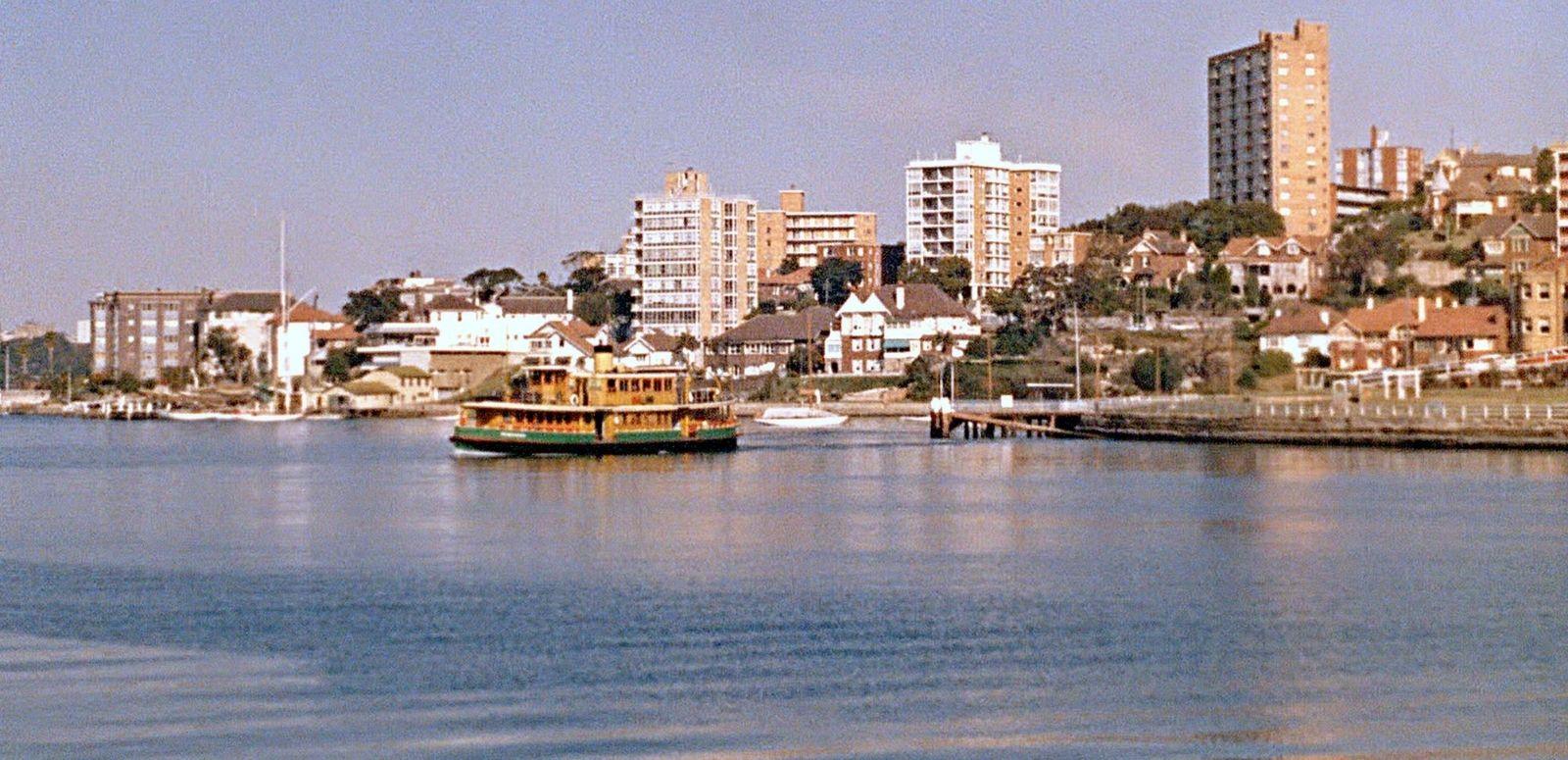
Sydney public transport
Sydney by public transport
To coincide with the publishing of the updated Sydney time capsule, we’re focusing on fabulous Sydney public transport memories.
Red rattlers and hydrofoils
As many Australians are being asked to wear masks and physically distance on public transport, it’s a good time to reflect on happier memories of the daily commute.
Ticket to Sydney (1971) features a multiplicity of transportation delights, from 15 cent ferry rides to the old ‘red rattler’ trains, double-decker buses, the long-gone hydrofoil and even an amphibious car!
Australian Colour Diary 39: Ticket to Sydney, Film Australia Collection © NFSA. NFSA title: 12733
Smoke on the water
Sydney Harbour is famous for its network of ferries which connects Sydney city with Manly, Parramatta, Cockatoo Island, Taronga Zoo and the inner west, eastern and northern suburbs.
This North Shore steam ferry is probably the wooden paddle ferry Cammeray, built in 1884. It is shown docking at Milsons Point wharf in 1899 in footage captured using a hand-cranked Lumière Cinematographe:
North Shore Steam Ferry, 1899. Courtesy Queensland Museum. NFSA title: 251313
Staying on the rails
The Sydney monorail, which ran in a single loop, connected Darling Harbour, Chinatown and the Sydney CBD. The 3.6 km track ultimately closed in 2013 and met with controversy when it opened in 1988:
Seven Nightly News, 21 July 1988. Courtesy Seven Network. NFSA title: 803129
Road runners
It turns out that traffic has been an issue for Sydney for some time. Buses, automobiles and trams compete for space in this chaotic scene of Anzac Parade junction traffic from the 1920s. No traffic lights here!
Anzac Parade Junction, Sydney Tramways, c.1928. NFSA title: 20035
Other transport treats
- Ain’t no social distancing on these trams after the races!
- Taking the same route as the new Sydney trams, we see the view from the top of a tram heading south down George Street in 1906.
- Parasols and papers – take a trip back to Newtown Railway Station in 1899.
- The evocative sound of a steam engine leaving the platform at Central Station.
- Don’t go changing ... The facade of St James Railway Station looks much the same today as it did when it opened in 1926.
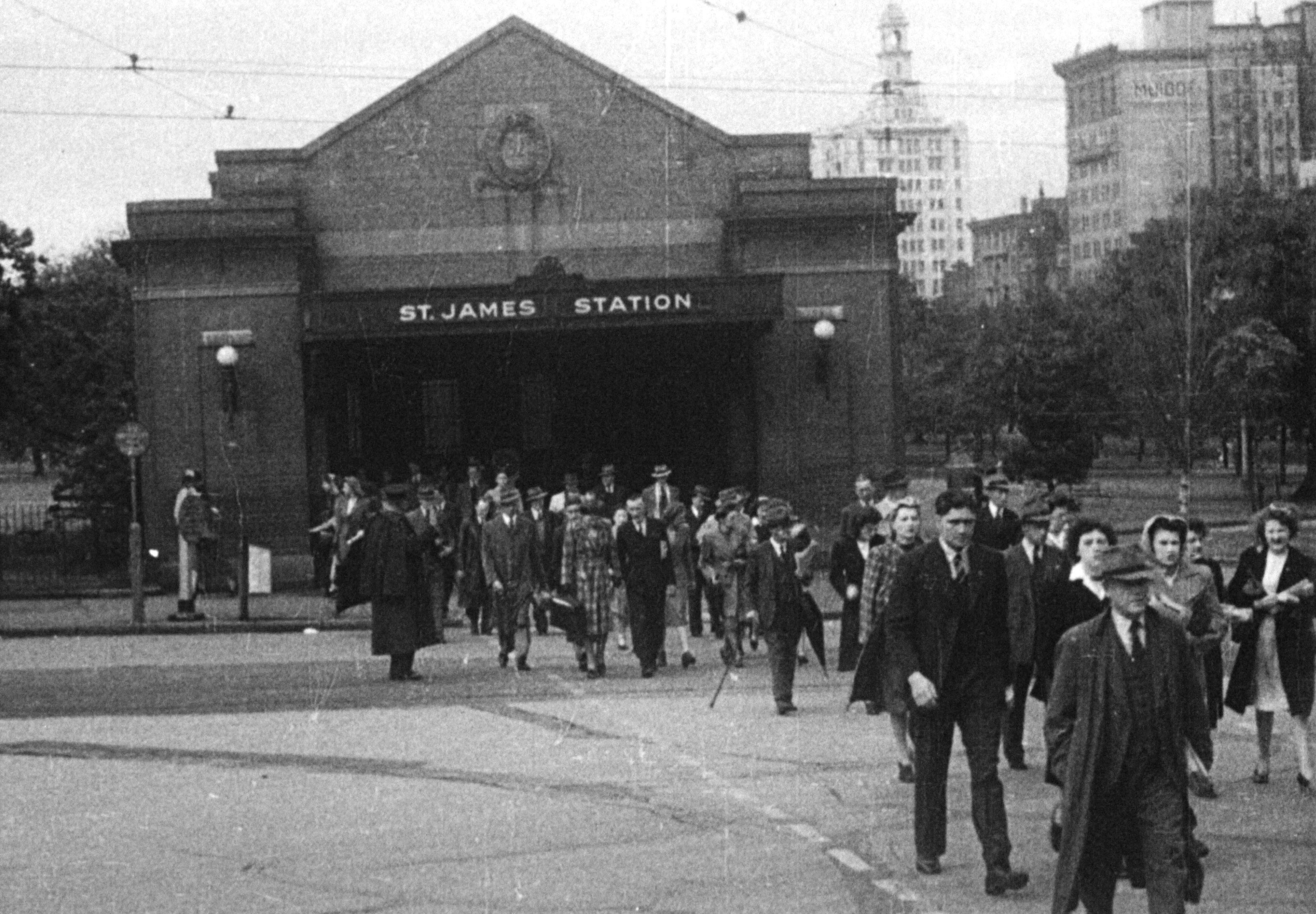
St James Station, City in the Sun, 1947, Film Australia Collection © NFSA. NFSA title: 10160
Check out the Sydney time capsule for other iconic Sydney sights and sounds from the last 120 years, including the Sydney Harbour Bridge, Opera House, Bondi Beach and Taronga Zoo.
The National Film and Sound Archive of Australia acknowledges Australia’s Aboriginal and Torres Strait Islander peoples as the Traditional Custodians of the land on which we work and live and gives respect to their Elders both past and present.
